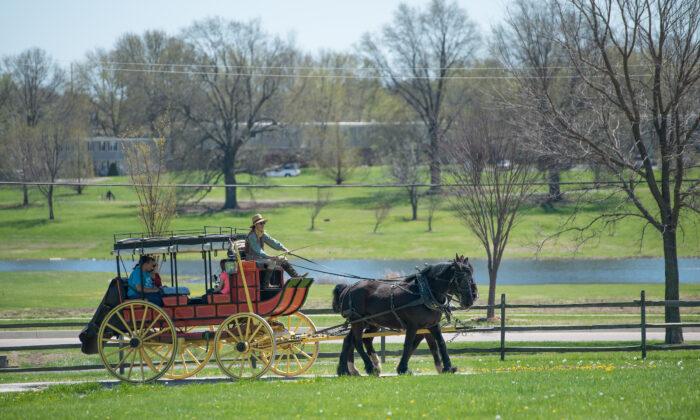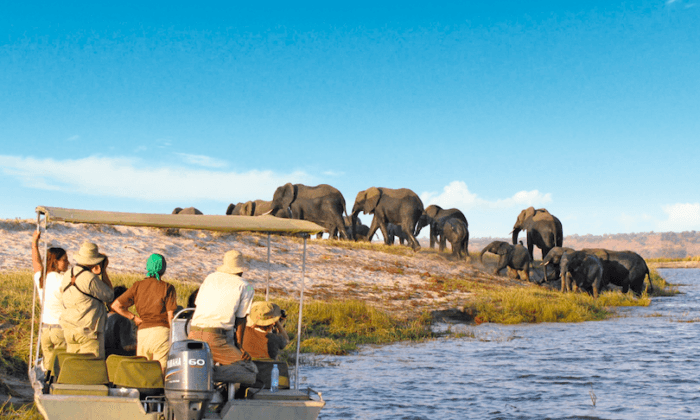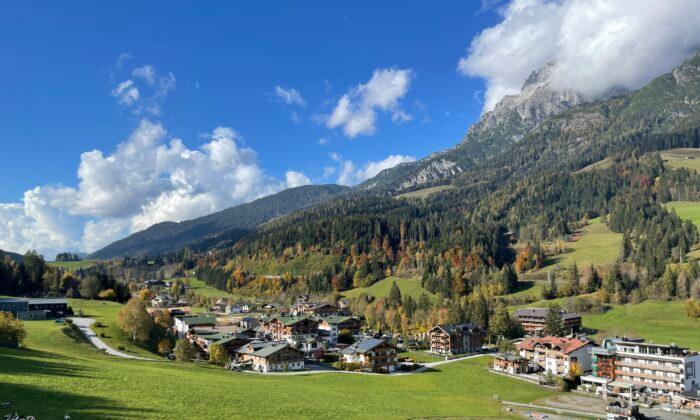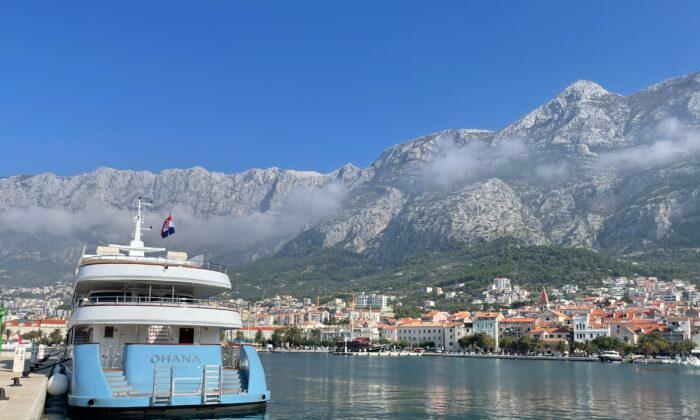Almost 200 years ago, a small band of merchant-traders set out on a trek from Independence, Missouri, to Santa Fe, a bustling town that once belonged to Spanish colonists.
In 1821, the people of Santa Fe overthrew Spain’s iron-fisted rule and became a province of Mexico. They were eager for commerce and welcomed the first shipment of goods from Missouri trader William Becknell in November of that year.
Trade and commerce between the two locations flourished, and the route soon became known as the Santa Fe Trail. Spanning more than 900 miles, the “Great Prairie Highway” was the region’s first commercial trade route. At first, the long treks were made with pack horses, but later, traders used wagon trains. It took between 40–60 days for a one-way trip.
Santa Fe became part of the United States in 1848, and the Santa Fe Trail was eventually replaced by the railroad. Traces of the trail can still be found along the former route, though.
One of the best places to experience and learn about this part of American history is in Kansas, where vestiges of the Santa Fe Trail have been carefully preserved.
Many of these locations are family-friendly, and there are plenty of unique places in Kansas to stay along the way. Next year is the 200th anniversary of the Santa Fe Trail, and it’s the perfect time to plan a trip to explore it.
Olathe
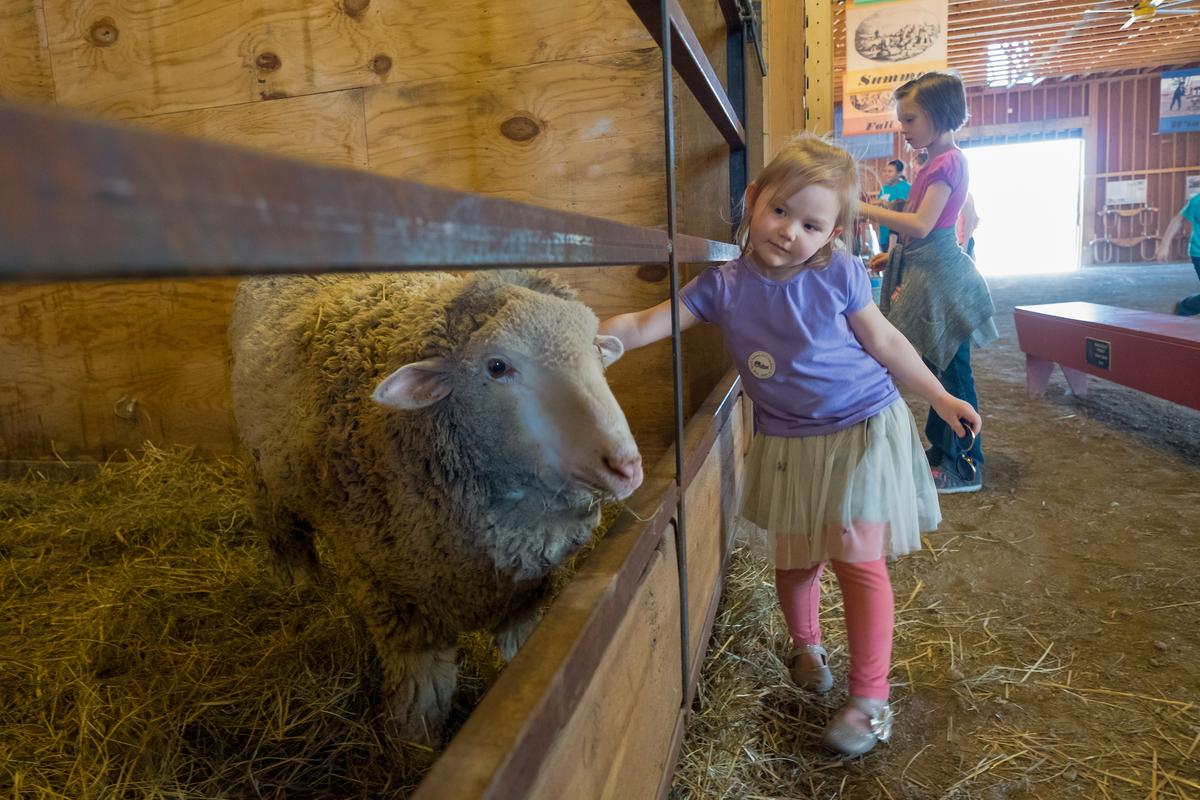
Kids will enjoy visiting the animals at the Mahaffie Stagecoach Stop & Farm. Courtesy of Kansas Tourism
Start your Santa Fe journey in the town of Olathe, Kansas. The town is home to the Mahaffie Stagecoach Stop & Farm Historic Site. It’s the only historic stagecoach stop that is still open to the public.
You can get a feel for life on the trail in the historic house or visit the oxen in the wood-peg barn. The stone farmhouse was built in 1865 by J.B. and Lucinda Mahaffie. It was one of the first stops for travelers using the Westport route of the Santa Fe, California, and Oregon trails.
Council Grove
From Olathe, head west to Council Grove. For many years, the region was home to the only trading post between Missouri and Santa Fe.Take the self-guided tour of the city, which stops at 25 historic sites. In Council Grove, a historic treaty was signed under a tree (Council Oak) between Osage Indian leaders and government officials. The agreement ensured safe passage and a public right of way along the Santa Fe Trail.
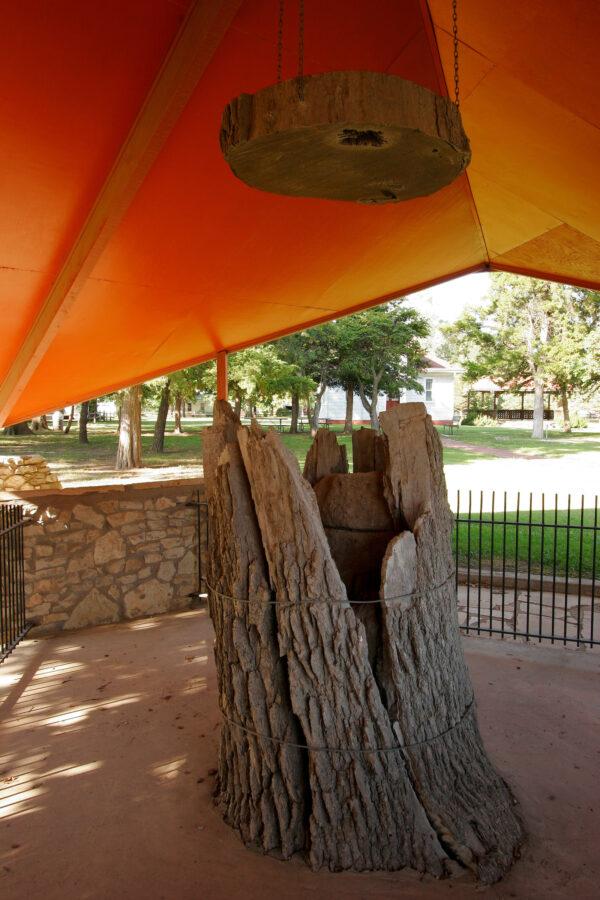
U.S. commissioners and Osage Indian chiefs signed a treaty under Council Oak on Aug. 10, 1825, to guarantee safe passage to those traveling the Santa Fe Trail through Osage territory. Courtesy of Kansas Tourism
Stop at the Last Chance Store to view some of the supplies that travelers could purchase before continuing the trail. Then grab a bite at the Trail Days Bakery and Café in the historic Terwilliger Home, a Santa Fe trail landmark that was built as Kansas was becoming a state. Please note: the café reopened on July 7, after COVID restrictions, and is currently serving guests on their porch. The café asks visitors to call before they visit.
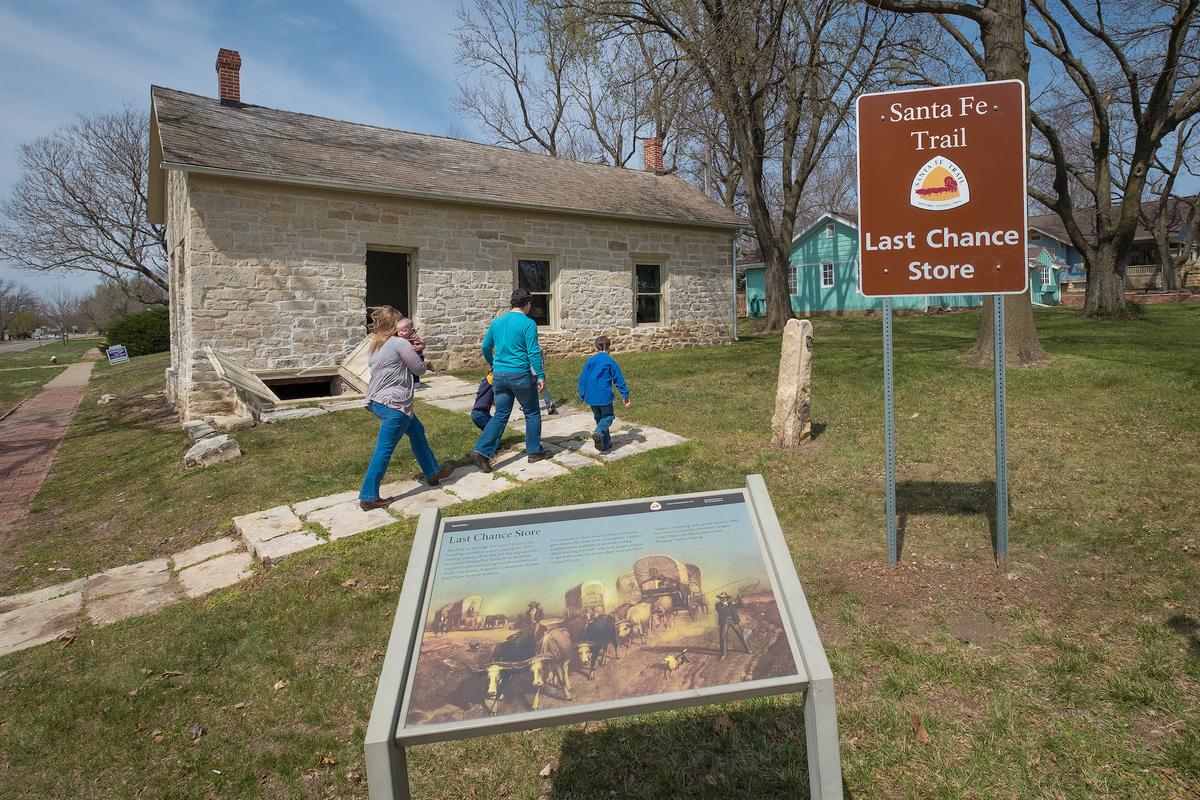
Passing through the Last Chance Store. Courtesy of Kansas Tourism
A popular restaurant in Council Grove is Hays House, which has been serving guests since 1857. It is one of the oldest continuously operating restaurants west of the Mississippi River, and from the looks of it, they’ve been pleasing guests ever since.
See Bison in Canton
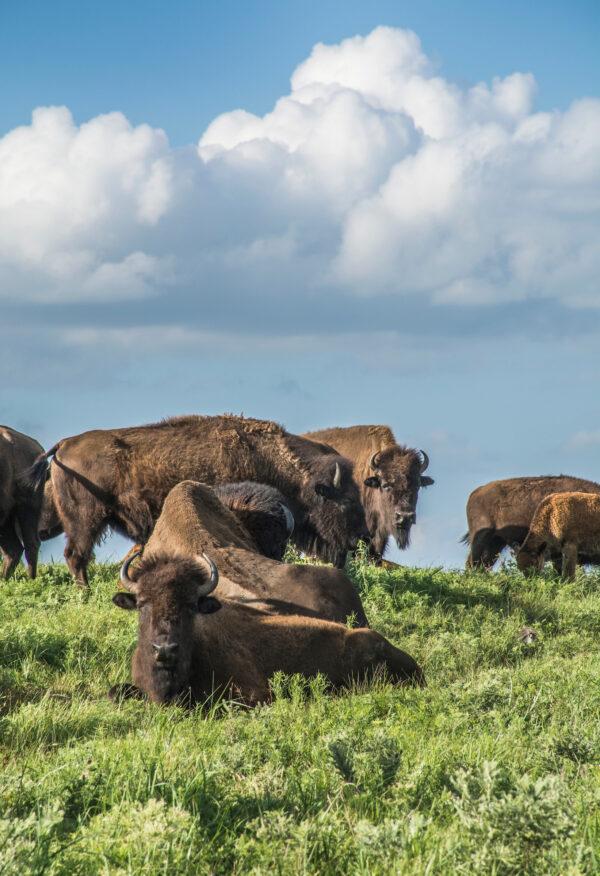
Bison at Maxwell Wildlife Refuge. Courtesy of Kansas Tourism
From there, you can head to the Maxwell Wildlife Refuge in Canton. This kid-approved experience offers a rare view of grazing bison on a 45-minute “covered wagon” tram tour.
You will also spot elk, birds, and other wildlife on the Kansas prairie. Call to make reservations, which are required. Adults are $13; children ages 11 and under are $6.50, age 3 and under are free.
Go Underground in Ellinwood
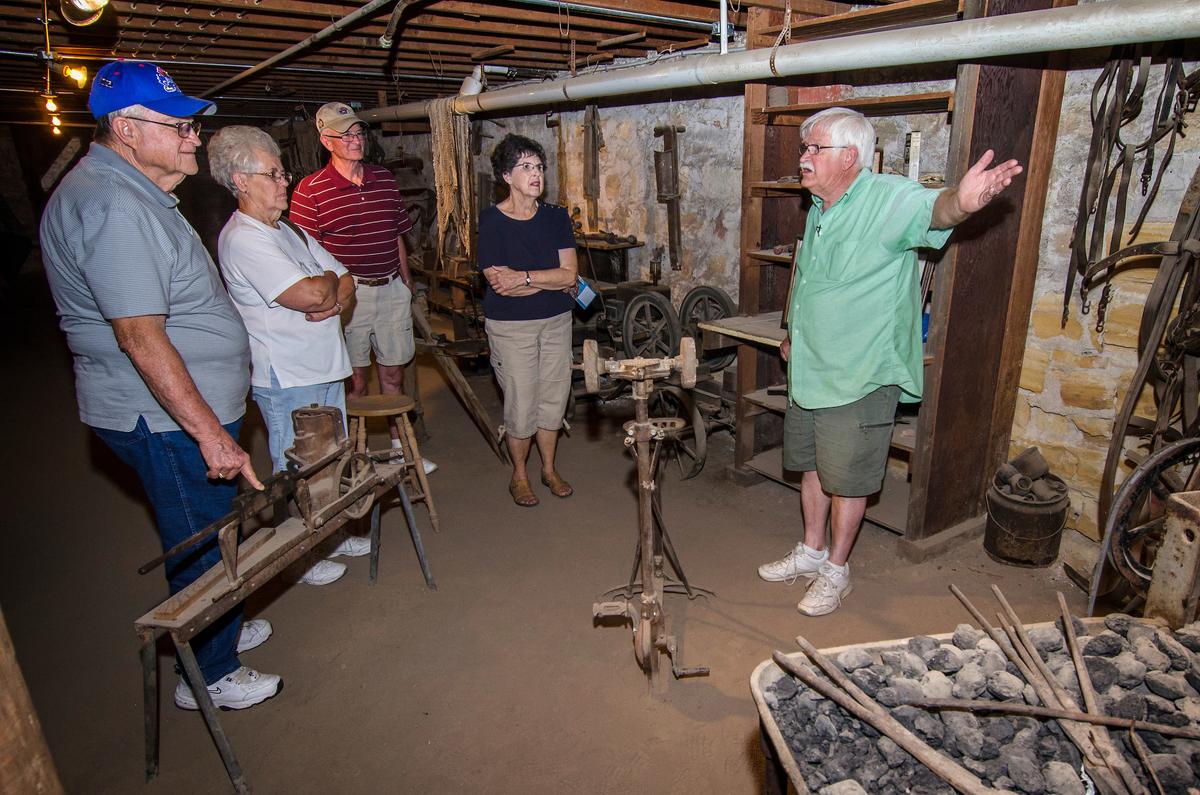
One of Ellinwood's underground rooms. Copyright Doug Stremel
The German immigrants who founded the town of Ellinwood, Kansas, had some unusual building techniques. In 1878, they built several tunnels and rooms underground, which housed the town barber, a bathhouse, a livery stable, and more.
As time passed, the tunnels were forgotten. They were eventually rediscovered in 1979, much in their original form.
Today, you can tour the tunnels for yourself. It almost feels like you are stepping back in time. Much of the furniture and belongings are still where they were left. Call to make a tour reservation. Tours are $6 per person.
Pawnee Rock State Historic Site
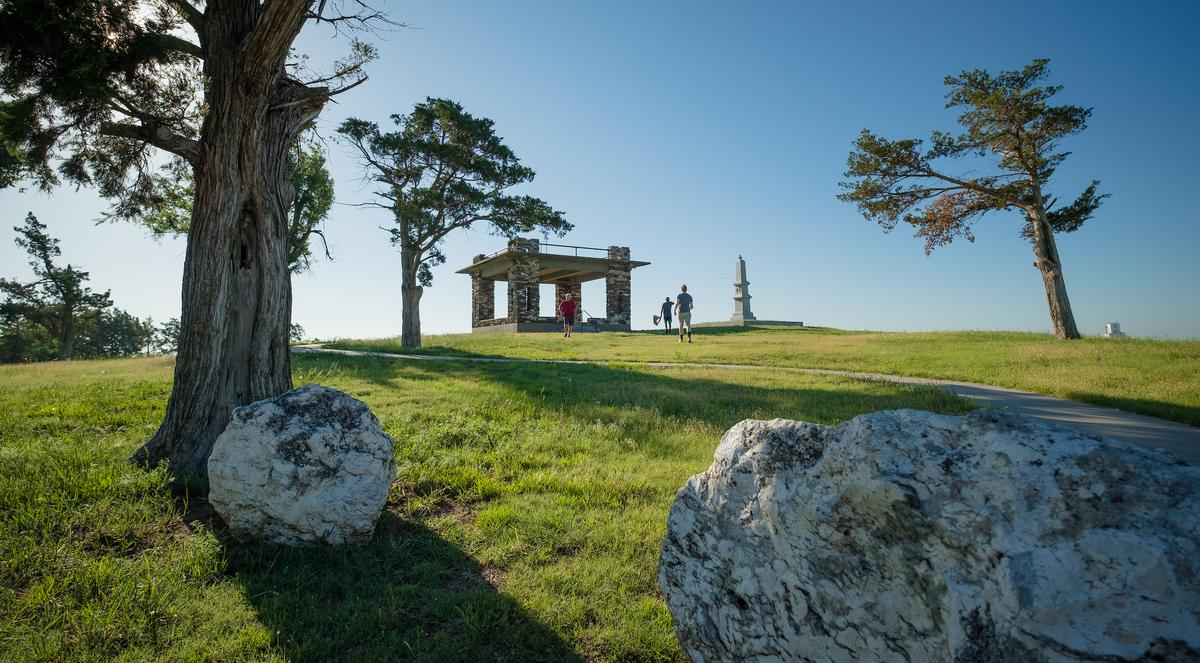
Pawnee Rock State Historic Site. Courtesy of Kansas Tourism
Those traveling across the vast open plains must have enjoyed the sight of today’s Pawnee Rock State Historic Site. The sandstone citadel was one of the most prominent landmarks along the journey.
Stand atop Pawnee Rock and you can understand why Native Americans used it as a vantage point to view bison herds and wagon trains. You’ll also find wide views of the Arkansas River Valley. The self-guided walk through the site is open from dawn to dusk daily and is marked with interpretive signs.
Santa Fe Trail Center Museum and Library
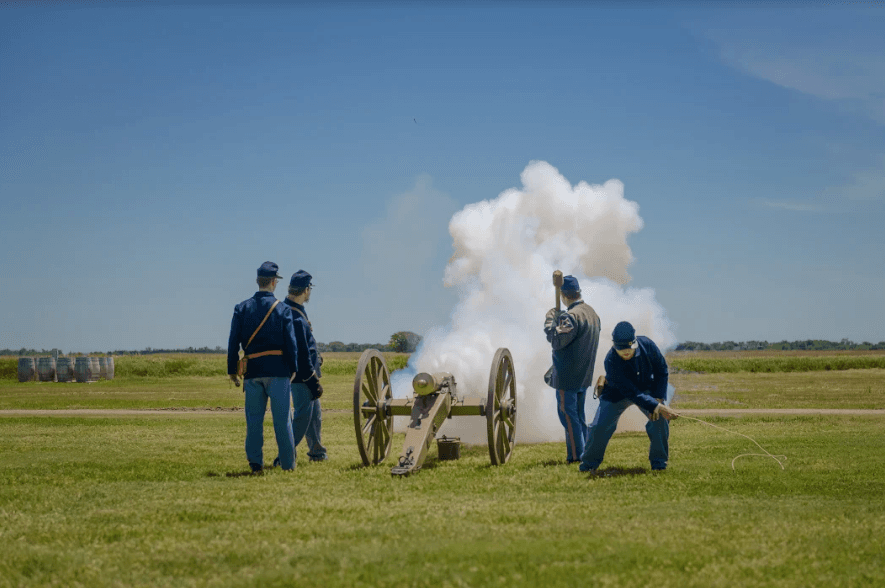
Learn about the Santa Fe Trail-Indian wars era at Fort Larned. Courtesy of Kansas Tourism
A must-see along your Santa Fe journey is the Santa Fe Trail Center Museum and Library in Larned, Kansas. This large museum tells the history of the Plains Indians who called the region home, as well as Mexican and American traders who frequented the trail.
The official interpretive site has a large collection of prehistoric artifacts, as well as remnants from the Santa Fe Trails days. Kids will enjoy seeing the Wichita Indian grass lodge and a full-size mounted buffalo.
Just around the corner from the museum is the Fort Larned Historic Site, one of the best-preserved vestiges of the Santa Fe Trail-Indian Wars era. Fort Larned operated from 1859–1878.
While the visitors center is closed at the moment, much of the historic site reopened to visitors on July 1, offering full access to all the non-climate-controlled historic buildings. Visitors can go inside the historic buildings, as well as access the site’s public trails, grounds, and prairie.
Ralph’s Ruts
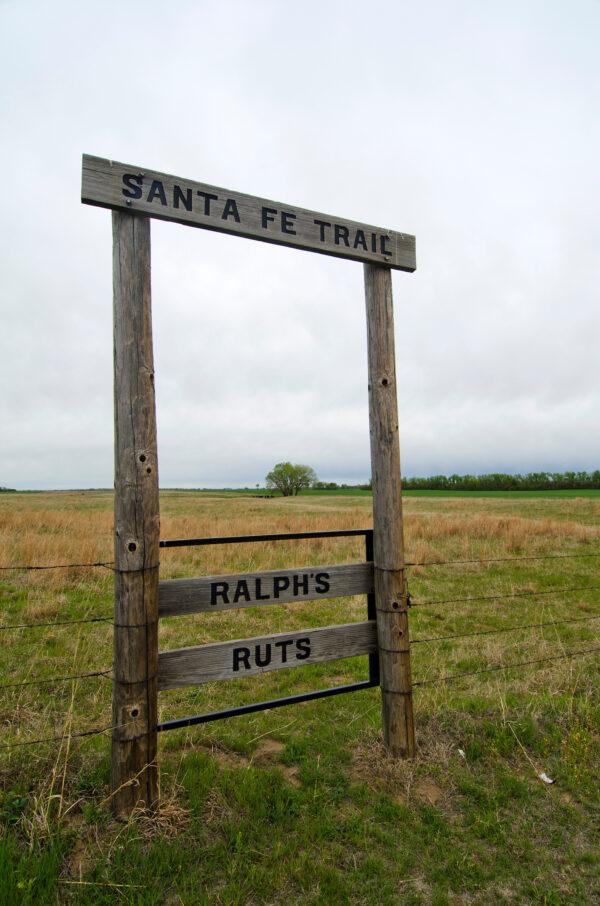
Gateway to Ralph's Ruts. Copyright Doug Stremel
If you look closely, you can still see some of the ruts left behind on the Santa Fe Trail at Ralph’s Ruts in Chase County. The ruts are named for Ralph Hathaway, whose family homesteaded here. Ralph’s grandfather found the ruts, and the family has preserved them since.
The ruts are located 4 miles west of Chase on Highway 56 and 3/4 mile north on 4th Avenue. You can park along the road and look for a small public gate near the Santa Fe Trail marker. Look east and you’ll see a series of swales amidst several small hills and valleys. According to local historians, oxen carved the trail into the sandy soil and created the valleys, while the “hill tops” are at the original ground level.
Sandsage Bison Range
If you missed seeing bison in Canton, Kansas, stop at the Sandsage Bison Range near Garden City for an up-close view of these great beasts. Owned by the State of Kansas, the refuge includes more than 3,600 acres of natural prairie. It was established in 1916, and the first bison were placed in 1924.Cimarron National Grassland
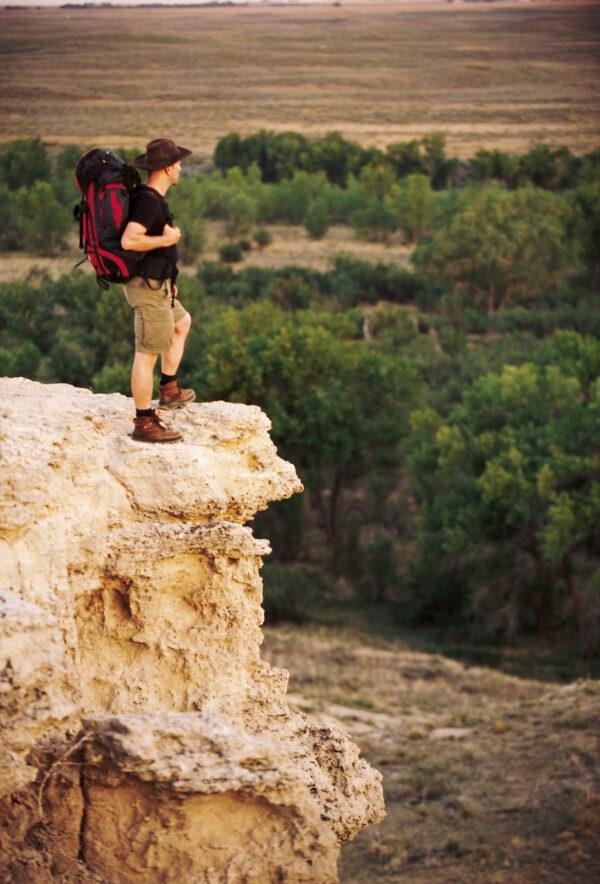
Hiker in Cimarron National Grassland. Courtesy of Kansas Tourism
To really see Kansas as those early travelers did, visit Cimarron National Grassland. Administered by the U.S. Forest Service, the site includes some 108,175 acres in Morton and Stevens counties in southwestern Kansas. More than 23 miles of the Santa Fe Trail once crossed this open prairie.
Climb up Point of Rocks, which at 3,540 feet is the third highest point in Kansas, and you can see all the way to Colorado and Oklahoma on a clear day. Here, with the Kansas wind in your hair, you can almost imagine what it was like back then—a time when the Santa Fe Trail was the Great Prairie Highway.
Janna Graber has covered travel in more than 55 countries. She is the editor of three travel anthologies, including “A Pink Suitcase: 22 Tales of Women’s Travel,” and is the managing editor of Go World Travel Magazine.

